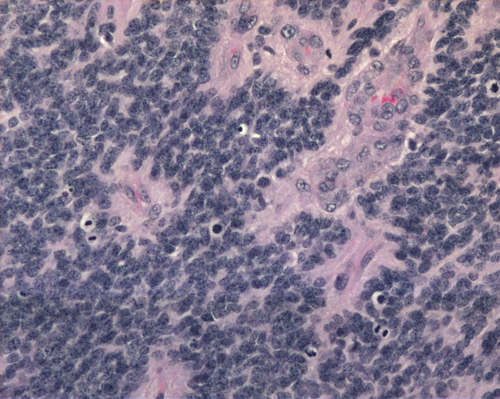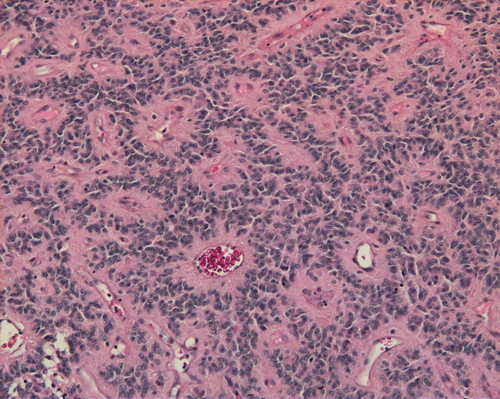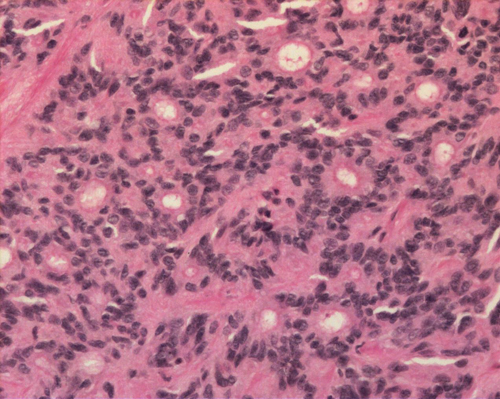Ependymoma
Pathology
Tumor histology
There are two proposed cellular origins for ependymal tumors. These tumors may develop from:
- Ependymal central neuroepithelial cells during embryogenesis
- Malignant degeneration of mature ependymal cells in the ventricular linings of subependymal zones of cellular proliferation.
Mature ependymal cells involved. Perivascular pseudorosettes and true ependymal rosettes are characteristic.
- Glial features lead to fibrillary appearance of the tumor.
- Glial fibrillary acidic protein (GFAP) expression is common.
- In general, tumor cells are polygonal with large nuclei, clumped chromatin, small but distinct nucleoli and cytoplasm which extend into processes.
Roughly one third of this tumors are high grade (anaplastic ependymoma):
- Brisk mitotic activity and vascular proliferation seen
- Associated with a worse prognosis
Summary of Histological Features of Ependymomas:
| Location |
|
| Macroscopic Appearance |
|
| Microscopic Appearance |
|
| Characteristic diagnostic feature |
1. Anaplasia X200 - Anaplastic ependymoma with brisk mitotic activity and vascular proliferation.

2. Pseudorosettes X100 - Ependymoma with typical pseudorosettes characterized by nuclear free spaces around blood vessels.

3. Ependymal rosettes X200 - Ependymal rosettes.


